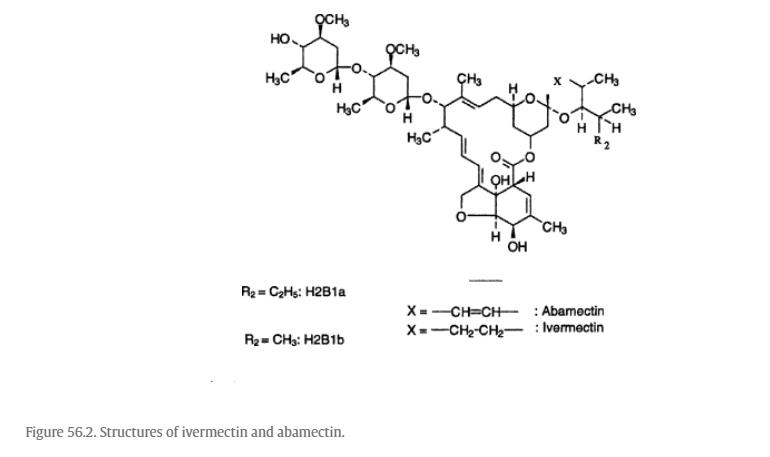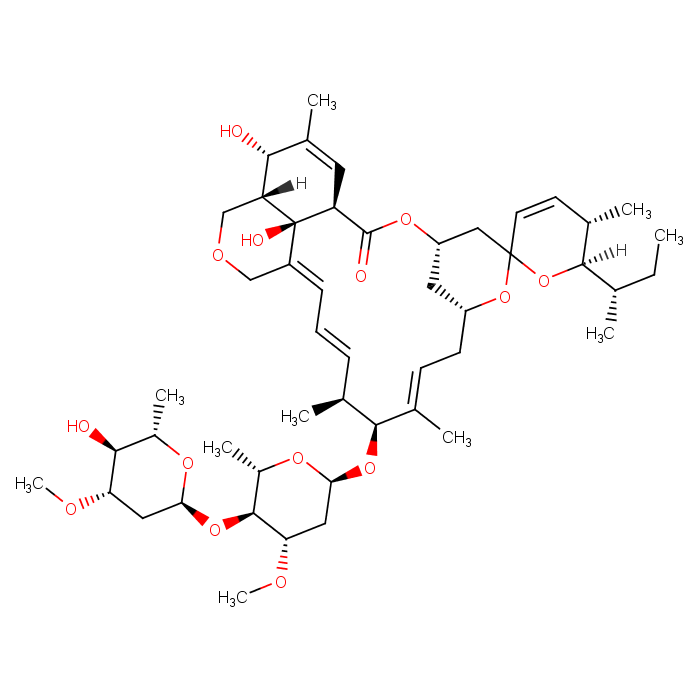Introduction:
AbameCtin ( AbameCtin) is an efficient pesticide and insect repellent, which belongs to the AbameCtin -class compound. It is widely used in agricultural production and has a strong killing and controlling effect on a variety of pests and mites.
Introduction:
What is ABAMECTIN? Abamectin (also known as AbameCtin B1) is a widely used insecticide and insect repellent. ABAMECTIN is a member of the ABAMECTIN family, and it is a natural fermentation product of soil plants of Avielchain mold. The difference between the common member of ABAMECTIN and the ABAMECTIN family is the double bonds between carbon 22 and 25. ABAMECTIN chain fungus fermentation produces eight closely related ABAMECTIN homologous, of which B1A and B1B are mostly fermented. Non -proprietary names ABAMECTIN refers to a mixture of B1A (~ 80%) and B1B (~ 20%). Among all AbameCtin, AbameCtin is the only drug that is also used for agriculture and pharmaceuticals.
1. Origin and history of ABAMECTIN
In 1967, after in -depth research to find a natural product with deworming activity, people discovered ABAMECTIN in the pyramidite fermentation liquid received from the Northern Institute of Japan. It was not until 1985 that the United Nations had only used Iveyin to treat human banosiosiopathy (tract width disease or river blindness) infection for the first time. ABAMECTIN's discoverer William C. Campbell and Okamura won the 2015 Nobel Prize in Physiology or Medicine.
2. ABAMECTIN active ingredients
ABAMECTIN belongs to a close -related large -related large -cycloid. These large strands are either produced directly by the picked bacteria chain moldin, or are produced by semi -synthetic modification. The structure of the natural ABAMECTIN is shown in Figure 56.1. ABAMECTIN's basic structural patterns are obvious in natural products AbameCtin B1A. It is the main component of insecticides AbameCtin. What are the components of ABAMECTIN? When used in pesticides, ABAMECTIN consists of 80% or more AbameCTIN B1A and 20% or less AbameCTIN B1B, called ABAMECTIN B1 (Fisher and Mrozik, 1989). Their structure is shown in Figure 56.2.


ABAMECTIN activated ingredients: Five ringin, produced by Avi -chain mold, has insecticidal, mate -killer activity, cross -layer effect and local internal absorption, broad -spectrum.
3. ABAMECTIN working principle
Like most other insecticides, ABAMECTIN is a neurotoxic agent. They stimulate γ-aminobutyric acid (GABA) system, which is a chemical "transaction" generated by nerve peripherals, which can inhibit the communication between nerves and nerves and nerves and muscles. Infected insects will be paralyzed, stop eating, and die a few days later. ABAMECTIN is used to fight mites and lover, and it is said that some major parasites and some predating mites can be protected in the lobulis. When applying it to the leaves, it will be absorbed by the leaves, and eating insects will be exposed to poison.
ABAMECTIN is not systematic, so good coverage is essential. AbameCtin, which is not absorbed by plants, will soon be degraded. ABAMECTIN pesticide is the sixth type of pesticides.
4. ABAMECTIN Technical Data Table
4.1 composition
( 1) Effective ingredient%: AbameCtinb1 mixture. ABAMECTINBLA is not less than 80%, and AbameCtinb1b does not exceed 20%.
No less than 1.8 % .
( 2) inert component: solvent , emulsifier.
No more than 98.2%
4.2 How to use
When using this product, always use personal protection equipment. When applying, use as much water as possible to achieve completely covered the leaves. This depends on the use of ground or air equipment. To this end, it is recommended to calibrate application equipment. After applying the device, clean it with water and soap. Let water circulate in the entire equipment to minimize waste.
4.3 Storage and safety
The product should keep the original, indoor, ventilation and dryness; away from heat and direct fire. Avoid contact with the eyes and skin, and use personal protection equipment for operation and application, such as : masks, gloves and rubber boots.
5. Common questions and answers
( 1) Is Abamectin organic or inorganic?
AbameCtin is a natural fermentation product, which is generated by soil microorganisms (a threading bacteria). Is AbameCtin organic? Because the source of this product is natural, it may be suitable for some organic "production plan.
( 2) Is the AbameCtin natural?
AbameCtin is a natural bacterial fermentation product of soil plasma Avichain mold. It contains two different structures with different compound mixtures, called Abamectin B1A and B1B.
( 3) Is AbameCtin systematic?
ABAMECTIN has limited system activity of plants. This chemical is absorbed by plants through the roots, stems, or leaves of plants. When the pests are intake in the part of the plants by the part of the chemical transfer, the chemical substance will attack the nervous system, causing paralysis within a few hours. Paralysis cannot be reversed. The maximum mortality occurs within three to four days after application.
refer to:
[1] https://pdf.usaid.gov/
[2] https://landscapeipm.tamu.edu/Types--Pest-control/chemical-control/organic
[3] https://www.beyondpesticides.org/assets/media/documents
[4] https://www.ftepeyac.com.mx/
[5] http://www.echem.com.au/
[6] https://www.buscador.portalTecNoagricola.com/
[7] https://www.sciencedirect.com/science/article/pii/b97801242626075005988
[8] https://en.wikipedia.org/wiki/abamectin





